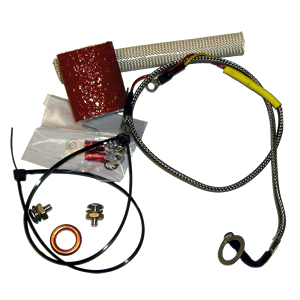 Ever since humans have learnt to fly, aircraft technology has taken giant leaps and continues to advance even further. Today, the pilot knows just about everything that is happening in the plane - from the cockpit to the aircraft tail and everything in between and have that information thanks to sensing systems installed in the aircraft. Ever since humans have learnt to fly, aircraft technology has taken giant leaps and continues to advance even further. Today, the pilot knows just about everything that is happening in the plane - from the cockpit to the aircraft tail and everything in between and have that information thanks to sensing systems installed in the aircraft.
Modern aircraft whether single or multi-engine have numerous sensors fitted all over the aircraft. These sensors range from array pressure sensors, temperature and non-temperature compensated pressure sensors, general purpose temperature compensated pressure sensors, un-compensated pressure sensors, general purpose explosion proof pressure sensors and high performance pressure sensors and general purpose pressure sensors.
Made from pure or amalgams of exotic metals, these sensing systems are meant to operate under the extreme pressure, temperature, dust and humidity conditions. In most cases these sensors are tethered to a display unit in the cockpit. Some manufacturers have been experimenting with sensors that transmit data using wireless technology thus avoiding the need for miles of cabling. However, for safety reasons, these types of sensing equipment have not yet been installed on aircraft because manufacturers have yet to come up with foolproof and hack-proof radio transmission technology.
Sensors measure levels (as in fuel level, water level, oil level, oxygen level etc.), they measure all types of pressure (e.g. oil pressure, gas pressure, cabin pressure etc) and, they measure all kinds of temperatures.
Each sensor is meant for a specific purpose and these include sending of air temperature, ice detection, oil system monitoring, engine pressure monitoring, engine temperature, speed and torque monitoring, Aircraft Gauge, fuel flow monitoring, liquid level monitoring (fuel, oil etc).
Tethered sensors generally have one or two wires leading back to a display unit in the aircraft cockpit. The display unit might be specialised i.e. one display unit per sensor or set of sensors or, it might be an Electronic Data Management System (EDM) that is capable of receiving data from all the sensors and displaying the information across one integrated unit that features a LCD / LED screen.
Aircraft sensing and display mechanism of aircraft Fuel Gauges systems play a vital role in the safety of the aircraft. For example, abnormal vibrations in the cargo area of a commercial aircraft might indicate broken cargo belts or belts that have somehow got unhooked. This is a dangerous situation and must be rectified before the aircraft attempts to land. Similarly, a sensor indicating abnormal temperature in one of the engines could be the precursor to an engine fire and an alert crew can switch off that engine and run a diagnostic to determine the source of the problem. Usually, data from a bunch of sensors reveal the source of the problem.
Aftermarket smart RPM Sensor and accompanying EDM’s are manufactured by J.P. Instruments – World leaders in EDM technology since 1979.
|